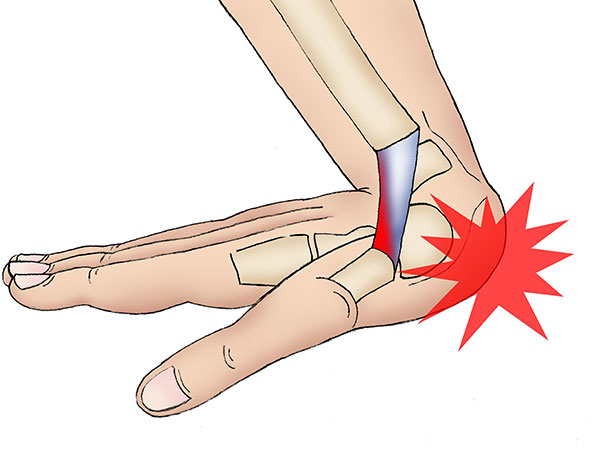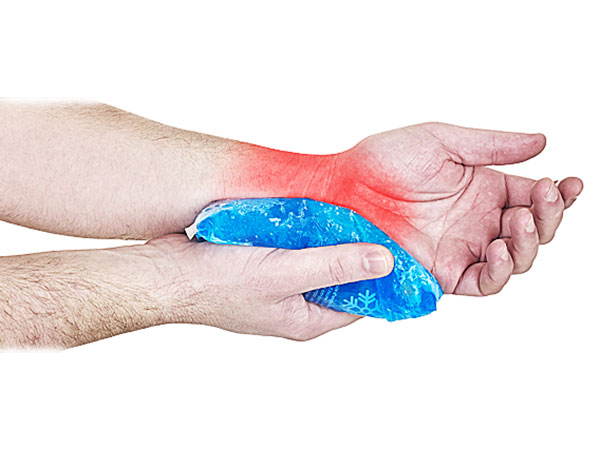Just In
- 1 hr ago

- 4 hrs ago

- 5 hrs ago

- 7 hrs ago

Don't Miss
- Finance
 Elon Musk Postpones India Trip, Tesla's Indian Market Entry Delayed
Elon Musk Postpones India Trip, Tesla's Indian Market Entry Delayed - News
 US Links 'Blue Whale Challenge' To Indian Student's Death In Boston | What Is The 'Suicide Game'?
US Links 'Blue Whale Challenge' To Indian Student's Death In Boston | What Is The 'Suicide Game'? - Movies
 Love, Sex Aur Dhokha 2: The REAL Reason Of Rajkummar Rao And Nushrratt Bharuccha Not Being Part Of The Film
Love, Sex Aur Dhokha 2: The REAL Reason Of Rajkummar Rao And Nushrratt Bharuccha Not Being Part Of The Film - Sports
 DC vs SRH My11Circle Prediction IPL 2024 Match 35: DEL vs HYD Fantasy Tips & Expert Picks
DC vs SRH My11Circle Prediction IPL 2024 Match 35: DEL vs HYD Fantasy Tips & Expert Picks - Technology
 Best Noise-Cancelling Earbuds Under Rs 5,000: CMF Buds Pro, Redmi Buds 5, Realme Buds Air 5, and More
Best Noise-Cancelling Earbuds Under Rs 5,000: CMF Buds Pro, Redmi Buds 5, Realme Buds Air 5, and More - Education
 UPMSP Class 10 and 12 Results 2024 Released Today, Check the Details Here
UPMSP Class 10 and 12 Results 2024 Released Today, Check the Details Here - Automobiles
 Tesla CEO Elon Musk's Much-Awaited Visit to India Deferred, Leaving Questions Unanswered
Tesla CEO Elon Musk's Much-Awaited Visit to India Deferred, Leaving Questions Unanswered - Travel
 Journey From Delhi To Ooty: Top Transport Options And Attractions
Journey From Delhi To Ooty: Top Transport Options And Attractions
Sprained Wrist: Types, Symptoms And Treatment
A wrist sprain is a common injury (more so for all sorts of athletes). A loss of balance is sufficient for you to slip and stick your hand out to prevent your fall. However, the moment your hand hits the ground, the force with which it hits makes it bend back towards your forearm causing a wrist sprain.
A wrist sprain is nothing but tiny tears (or in worse cases, a break to the ligament) that occur when the ligaments connecting the wrist and the hand bones are stretched beyond the limit. Two of the most common ligaments in the wrist that tend to get sprained are the scapholunate ligament in the middle of the wrist (between the scaphoid and lunate bones) and the TFCC (triangular fibrocartilage complex) on the outside of the wrist.
At times, the wrist sprain also includes a pull in a tiny piece of bone. This is called an avulsion fracture.[1]

Apart from falls, wrist sprain can also occur when[3]
•
you
get
hit
behind
the
wrist,
or
•
you
exert
extreme
pressure
on
the
wrist
or
twist
it
too
hard.
Athletes who commonly suffer wrist sprains are as follows:[4]
•
Baseball
players
•
Basketball
players
•
Gymnasts
•
Skaters
•
Divers
•
Skiers
•
Inline
skaters
•
Skateboarders

Symptoms Of A Wrist Sprain[5]
•
Swelling
•
Severe
pain
•
Bruising
•
The
feeling
of
tearing
in
the
wrist
•
Tenderness
around
the
injury
•
The
injured
site
gets
warm
to
touch
Types Of Wrist Sprains[6]
Sprains can, in general, be divided into the following three grades:
•
Grade
I:
Minor
damage
to
the
ligament
with
moderate
pain
•
Grade
II:
Ligament
damage
that
is
severe
than
Grade
I,
increased
pain
•
Grade
III:
Severe
pain,
completely
torn
ligament,
loss
of
function
with
the
extreme
looseness
of
the
joint
Diagnosis Of A Wrist Sprain[7]
Usually, your doctor will be able to determine the severity of the wrist pain just by a thorough physical examination. However, in some cases, the following might be advised:
•
X-ray
•
MRI
•
Arthroscopy
[8]
:
It's
a
minimally
invasive
surgical
procedure
wherein
a
tiny
camera
is
inserted
into
the
wrist.
•
Arthrogram[9]
:
A
kind
of
X-ray
or
MRI
that
is
done
after
injecting
a
dye
into
the
wrist.
Treatment For A Wrist Sprain
Minor to moderate wrist sprains are usually not a cause of worry and they can heal on their own (it would just need about a week's time to be completely healed). However, to speed up the healing, you can do the following[10] :
• Ice your wrist: This is highly effective for reducing the swelling as well as the pain. Do it for about 20 minutes every 3 hours for a minimum of two days (or until the pain is gone).
• Rest: Let your sprained wrist rest for at least 48 hours.
• Compress: Provide compression to the sprained wrist using a bandage.
• Keep your wrist elevated: As often as you can, ensure that your sprained wrist is kept elevated (the elevation should be above your heart level). You can use a pillow or the back of a chair for the elevation.
• Use of anti-inflammatory painkillers: Non-steroidal anti-inflammatory drugs work great in reducing the swelling and the pain of the sprained wrist. However, it is always important to know that these drugs could have side effects (such as increased risk of bleeding and ulcers). Restrict their usage to minimal. Also, consult with a medical practitioner before you take any medicines.
• Use a cast or a splint[11] : It is important to keep the sprained wrist immobile for as long as possible. Using a cast or splint could help you with this. However, most people use the cast/splint only for a short duration (sometimes till one can go see a doctor). You can even consult with your doctor whether you can start/continue using the cast or splint. Nevertheless, it is essential to note that using a splint for too long can result in stiffness and muscle weakness for some people.
• Exercise: Practice strengthening and stretching exercises (but only after your doctor's approval). Also, depending on the condition of your wrist, an occupational therapist would be able to guide you with a specific exercise routine.
Note: Grade III wrist sprains are extremely severe and cannot be cured using the above methods. It is necessary that in such cases, you consult a doctor immediately. Grade III wrist sprains (in which the ligament is snapped) might require surgery to repair.

Recovering After A Wrist Sprain
The recovery time is dependent on the severity and seriousness of the sprain. It usually takes 2 to 10 weeks to heal completely. However, this still remains to be a rough estimate. Every person heals at a different rate. Also, one should indulge in activities that wouldn't strain their affected wrist [12] . Especially for athletes, it is important that one rests for a while and does not worsen the condition of the sprained wrist by participating in sports that can aggravate the injury.
Remember that you can return to your old level of physical activity only after you can agree with the following:
•
There
is
no
pain
in
your
wrist
when
it
is
at
rest.
•
You
are
able
to
work
out
easily,
without
any
pain.
•
You
can
grip
and
move
objects
easily,
without
any
pain.
•
Your
injured
wrist
(along
with
your
hand
and
arm)
feels
as
strong
as
your
uninjured
wrist
(including
the
hand
and
arm).
If you begin using your wrist extensively even before it has completely healed, then there is a possibility of suffering permanent damage.

Prevention Of Wrist Sprains
It's extremely hard to practice a habit which could certainly confirm that one would not slip or fall. Light accidents are unavoidable at times and most often are not due to acts of carelessness. Specifically, wrist sprains are quite hard to prevent. Even the most well-trained athlete can slip.
However, it is important that one is always careful. It is necessary that you follow a safe exercise regime. Indulge in the ones that you know that you can carry out perfectly without hurting yourself. For athletes, it is recommended that they use wrist guards[13] or tapes (used to prevent the backward bending of the wrist during a fall).
- [1] Forman, T. A., Forman, S. K., & Rose, N. E. (2005). A clinical approach to diagnosing wrist pain.Am Fam Physician,72(9), 1753-1758.
- [2] Pulos, N., & Kakar, S. (2018). Hand and wrist injuries: common problems and solutions.Clinics in sports medicine,37(2), 217-243.
- [3] Avery, D. M., Rodner, C. M., & Edgar, C. M. (2016). Sports-related wrist and hand injuries: a review.Journal of orthopaedic surgery and research,11(1), 99.
- [4] Fufa, D. T., & Goldfarb, C. A. (2012). Sports injuries of the wrist.Current reviews in musculoskeletal medicine,6(1), 35-40.
- [5] van Vugt, R. M., Bijlsma, J. W., & van Vugt, A. C. (1999). Chronic wrist pain: diagnosis and management. Development and use of a new algorithm.Annals of the rheumatic diseases,58(11), 665-674.
- [6] Bayoumy, M. A., Elkady, H. A., Said, H. G., El-Sayed, A., & Saleh, W. R. (2015). Arthroscopic grading of common wrist disorders and its role in management.Journal of orthopaedics,12(Suppl 2), S244-250.
- [7] Forman, T. A., Forman, S. K., & Rose, N. E. (2005). A clinical approach to diagnosing wrist pain.Am Fam Physician,72(9), 1753-1758.
- [8] Mohamadi, A., Claessen, F. M., Ozkan, S., Kolovich, G. P., Ring, D., & Chen, N. C. (2016). Diagnostic Wrist Arthroscopy for Nonspecific Wrist Pain.Hand (New York, N.Y.),12(2), 193-196.
- [9] Zinberg, E. M., Palmer, A. K., Coren, A. B., & Levinsohn, E. M. (1988). The triple-injection wrist arthrogram.The Journal of hand surgery,13(6), 803-809.
- [10] Einhorn, T. A., & Gerstenfeld, L. C. (2014). Fracture healing: mechanisms and interventions.Nature reviews. Rheumatology,11(1), 45-54.
- [11] Carruthers, K. H., O'Reilly, O., Skie, M., Walters, J., & Siparsky, P. (2017). Casting and Splinting Management for Hand Injuries in the In-Season Contact Sport Athlete.Sports health,9(4), 364-371.
- [12] Koman, L. A., & Poehling, G. C. (1990). Fractures and ligamentous injuries of the wrist.Hand clinics,6(3), 477-491.
- [13] Russell, K., Hagel, B., & Francescutti, L. H. (2007). The effect of wrist guards on wrist and arm injuries among snowboarders: a systematic review.Clinical Journal of Sport Medicine,17(2), 145-150.
-
 healthInternational Day Of Yoga: 4 Yoga Poses To Treat Hand Pain From Typing Constantly
healthInternational Day Of Yoga: 4 Yoga Poses To Treat Hand Pain From Typing Constantly -
 wellnessWhy A Bump On Your Wrist Is A Cause For Concern
wellnessWhy A Bump On Your Wrist Is A Cause For Concern -
 disorders cure8 Effective Home Remedies For Carpal Tunnel Syndrome (CTS)
disorders cure8 Effective Home Remedies For Carpal Tunnel Syndrome (CTS) -
 diet fitness7 Tips For Perfect Pushups
diet fitness7 Tips For Perfect Pushups -
 diet fitnessMayurasana (Peacock Pose) To Strengthen Wrist & Forearms
diet fitnessMayurasana (Peacock Pose) To Strengthen Wrist & Forearms -
 disorders cureHome Remedies For Hand And Wrist Pain
disorders cureHome Remedies For Hand And Wrist Pain -
 wellnessWhat Are The Benefits Of Cold Water Therapy Or Cryotherapy?
wellnessWhat Are The Benefits Of Cold Water Therapy Or Cryotherapy? -
 disorders cureUsing A Compression Wrap For Sprained Ankle
disorders cureUsing A Compression Wrap For Sprained Ankle -
 disorders cureThese Natural Remedies Help To Treat Sprained Ankles
disorders cureThese Natural Remedies Help To Treat Sprained Ankles -
 disorders cureQuick Home Remedies For Sprained Ankles
disorders cureQuick Home Remedies For Sprained Ankles -
 diet fitness5 Side Effects Of Exercise
diet fitness5 Side Effects Of Exercise -
 wellness12 Best Home Remedies For Muscle Sprain
wellness12 Best Home Remedies For Muscle Sprain


 Click it and Unblock the Notifications
Click it and Unblock the Notifications



